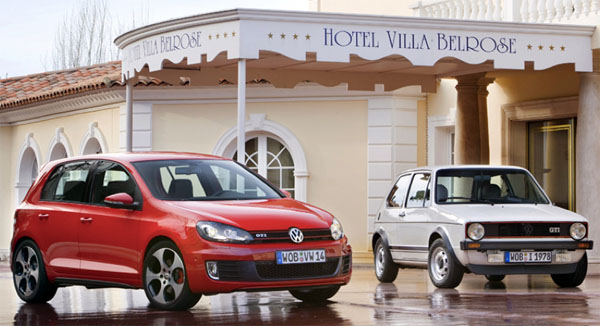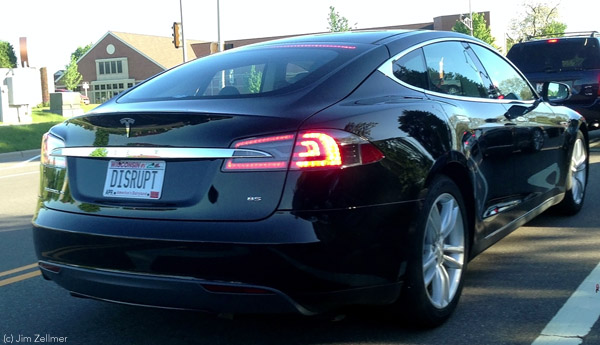Government suppression of private money is inevitable in the entitlement-state era. What is the alternative? Are governments going to stand idly by while more and more people avoid taxes and sidestep inflation? Government largess depends on taxation and monetary debasement. If there were private money, the welfare state could not exist. So, can there be any doubt that the government will throttle virtual currencies?
Consider the attraction of bitcoin and the like. People are desperate to have a stable, non-debaseable medium of exchange–so desperate that they are willing to try a virtual currency backed by nothing, so long as they believe that its supply will remain relatively stable. But what makes for this desperation? Why isn’t the government-controlled dollar stable in value? Why does government inflate and debase its own money? The answer is: to finance the entitlement state.
Consider. It is politically impossible to tax people enough to pay for the cancerous federal spending. Just perform this simple calculation. Divide the $4 trillion of government spending by the number of taxpayers in the country. There are considerably fewer than 100 million Americans who pay any significant amount in income tax, but take that figure. The division works out to $40,000 per taxpayer per year. And of course spending is always growing.
Google+ isn’t a social network; it’s The Matrix
Pretty much everyone (myself included) has been reading Google+ wrongly. Because it bears many superficial resemblances to social networks such as Facebook or Twitter – you can “befriend” people, you can “follow” people without their following you back – we’ve thought that it is a social network, and judged it on that basis. By which metric, it does pretty poorly – little visible engagement, pretty much no impact on the outside world.
If Google+ were a social network, you’d have to say that for one with more than 500 million members – that’s about half the size of Facebook, which is colossal – it’s having next to no wider impact. You don’t hear about outrage over hate speech on Google+, or violent videos not getting banned, or men posing as 14-year-old girls in order to befriend real 14-year-old girls. Do people send Google+ links all over the place, in the way that people do from LinkedIn, or Twitter, or Facebook? Not really, no.
There’s a simple reason for this. Google+ isn’t a social network. It’s The Matrix.
Madison’s Excellent Mediterranean Cafe

The Mediterranean Cafe
and, across the street:
Early Monday Morning “Disruptive Tesla”
Epic Systems Clearing Storm Landscape Images



Judy Faulkner’s Epic Systems has grown explosively over the past decade. I thought it time to capture a few landscape images of Epic’s sprawling Verona, WI campus from nearby public roads (tap or click on the images above to view larger versions).
While certainly a fan of Epic’s growth, I am very disappointed that the most recent impetus has been driven by a significant federal “stimulus” tax credit:
Eligible professionals can receive up to $44,000 through the Medicare EHR Incentive Program and up to $63,750 through the Medicaid EHR (electronic health record) Incentive Program.
. This means that we get to pay twice, once via our ever increasing health insurance fees and second, via taxes. I am unaware of any other industry that has a substantial per person automation tax incentive.
Fiscal indulgences, indeed.
Epic’s growth has begun to attract attention, particularly around system interoperability and Faulkner’s presence as the only industry representative on a federal panel overseeing the $19 billion EHR stimulus incentive.
A few links:
- An Interview With The Most Powerful Woman In Health Care
- Epic Systems: Epic Tale
- An Epic Voyage
- twitter.com/FakeEpicJudy
- Questions raised about Epic software – Kaiser official quits in flap on cost overruns Epic responds to critics of electronic record installation
- Epic has been involved in some political skirmishes as well.
- Epic Systems’ Tough Billionaire
- Epic’s website, Facebook flickr
- Epic diss: Verona health records company left out of new industry collaboration
Tokyo at Night in Monochrome
Markus Nagele. Very Nice.
The Banality of ‘Don’t Be Evil’
“THE New Digital Age” is a startlingly clear and provocative blueprint for technocratic imperialism, from two of its leading witch doctors, Eric Schmidt and Jared Cohen, who construct a new idiom for United States global power in the 21st century. This idiom reflects the ever closer union between the State Department and Silicon Valley, as personified by Mr. Schmidt, the executive chairman of Google, and Mr. Cohen, a former adviser to Condoleezza Rice and Hillary Clinton who is now director of Google Ideas.
The authors met in occupied Baghdad in 2009, when the book was conceived. Strolling among the ruins, the two became excited that consumer technology was transforming a society flattened by United States military occupation. They decided the tech industry could be a powerful agent of American foreign policy.
The book proselytizes the role of technology in reshaping the world’s people and nations into likenesses of the world’s dominant superpower, whether they want to be reshaped or not. The prose is terse, the argument confident and the wisdom — banal. But this isn’t a book designed to be read. It is a major declaration designed to foster alliances.
“The New Digital Age” is, beyond anything else, an attempt by Google to position itself as America’s geopolitical visionary — the one company that can answer the question “Where should America go?” It is not surprising that a respectable cast of the world’s most famous warmongers has been trotted out to give its stamp of approval to this enticement to Western soft power. The acknowledgments give pride of place to Henry Kissinger, who along with Tony Blair and the former C.I.A. director Michael Hayden provided advance praise for the book.
“and try DSG before signing the dotted line”

“Isn’t it exciting to go car shopping?” – a friend at the gym offered his thoughts on cars worth consideration during a recent early morning chat.
Thankfully, my need to go car shopping has been infrequent, indeed, over the decades. The slow demise of our second car, a 1996 Taurus wagon, meant that the time was nigh to shop. I created a shortlist, largely around 5 door hatchbacks:
- Subaru WRX (sedan only at the moment and hard to find as a new model is on the way) or Impreza. Our late model Forester’s reliability, toughness and driving pleasure naturally led us to consider other family members.
- Ford Focus ST
- VW GTI
I drove the Impreza, Focus ST, VW TDI and GTI. The Impreza did not feel as solid as our Forester. I sensed – and I could certainly be wrong – that Subaru has begun to de-content their cars (I can certainly be wrong as business is apparently very good). Perhaps it is simply just a different car, though the mechanicals, as in all Subarus, are similar.
The Focus ST was a surprise, perhaps a shock. I found the ST’s power, handling, aesthetics and, at least in the black version, subtlety appealing. But, but, headroom was a challenge for me, heated seats (we buy cars rarely, so we thought it was time for one with warm seats) are only available in the most expensive version (along with the unwanted microsoft computer and a number of other features) and while I enjoy a manual transmission, the lack of a DCT (dual clutch transmission) option sealed the deal against a ST purchase.
My interest and awareness in a more modern transmission was peaked after reading Georg Kacher’s review of the mk7 GTI (available in Europe now, US next year). Kacher closed his review with “Which spec to buy? Take the more practical four-door, spend extra on the Performance Pack and on 18in rubber, and try DSG before signing the dotted line.”
I drove a DSG equipped GTI. The paddle shifters, manual, sport and automatic modes sold me.
Shift up or down quickly via the paddles. Select sport (“S”) and fly or (“D”) and cruise. The DSG’s paddles are a blast.
The GTI, despite being shorter than the Focus ST or Impreza, offers great headroom, heated seats on the lesser models and most importantly, lively performance.
I purchased mine, a “Wolfsburg” edition, from Frank Boucher Volkswagen in Janesville. Pami, Scott and Tom were delightful to deal with. A simple, fast and hassle free purchase. And, no, the “business manager” did not mention “if people want to drive around without an extended warranty, it is not my concern“.
A few GTI reviews:
Ben Barry’s Mk6 GTI (2009) review
Top Gear
autoblog
Car & Driver
Autocar
Twitter Search #GTI
YouTube DSG GTI videos.
What a blessing to be in a position to buy a car!
Less guff, more puff: Thanks to new digital tools, marketing is no longer voodoo
WHEN a power cut interrupted this year’s Super Bowl, advertisers lit up. “Sending some LEDs to the @MBUSA Superdome right now,” tweeted Audi, swiftly plugging its own LED-accented car while taking a dig at its rival Mercedes, sponsor of the New Orleans Superdome. Tide, a detergent, came up with: “We can’t get your #blackout, but we can get your stains out.” But by general consent Oreo won the tweet-off with “Power out? No problem. You can still dunk in the dark.” The biscuit baker’s reward: 16,000 retweets and 20,000 Facebook likes.
Super Bowl TV commercials are the Broadway spectaculars of the marketing world, broadcast to millions. The blackout banter is more like improv, created on the fly for a select audience. Marketers these days must master both. It is not easy. Lightning reflexes have never been part of a marketer’s toolkit. Chief marketing officers (CMOs) “used to deliver big iconic brand ideas on a seasonal basis,” says Luke Taylor of DigitasLBi, a digital advertising agency. Some “are outside of their comfort zones”.
Worth Driving

Shopping for a small car recently, I had the surprising pleasure to drive Ford’s new “hot hatch”, the 2013 Focus ST. Astonishing, swift, fun, explosive, svelte and a tremendous value – my thoughts while driving the 6-speed manual ST. Ford has certainly come a long way from generic, boring cars.
My pre-purchase checklist:
Pro ST:
- Value: roughly $23K for the base model
- Subtle: the black ST is quite elegant and understated – the opposite of some of the brighter options.
- Loads of torque
- Impressive hatch storage space (I would trade this for more headroom)
- Base model is available without the microsoft bits known as “MyFord Touch“
- Five door hatchback is a great, flexible car.
- Fuel economy: 23/32; 26 combined mpg. Impressive.
- Assembled in Michigan.
- Middleton Ford’s (Keith Norris) customer service was quite good. They kept in touch regularly via email, answering questions and offering several different configuration options. Madison’s long time Ford dealer – Kayser – was fine in person but non-existent on subsequent inquiries.
Con ST:
- Heated seats can only be had on the most expensive model, known as the ST3. One must accept the microsoft/MyFord Touch bits along with leather Recaro seats and other goodies. I prefer simplicity all around.
- Interior room: at about 6’2″, I was somewhat cramped in the ST’s front seats. The back seats were serviceable, but not terribly comfortable. Headroom is limited.
- 6 speed manual only, no DCT (DSG). I have long enjoyed three pedal cars, but after driving the latest GTI DSG, I am a convert….
Several ST reviews:
Georg Kacher
Top Gear
Wired
Focus ST Forum
duckduckgo.com search
UK’s CAR magazine
Twitter Search #FocusST
TX Garage
Peter DeLorenzo
Ford is to be commended for creating, shipping and supporting the Focus ST. I would have owned one but for the tight interior and lack of a DCT transmission option. Heated seats at an affordable price would be a plus in the base model as well.
Marketing Notes:
- App Store: GTI 35 Edition iOS Game I did not find a Focus ST app.
- Brand www sites: Focus ST GTI
- Cars.com inventory (5.30.2013): Focus ST (2189) GTI (4004)
Next, why I chose a GTI.
